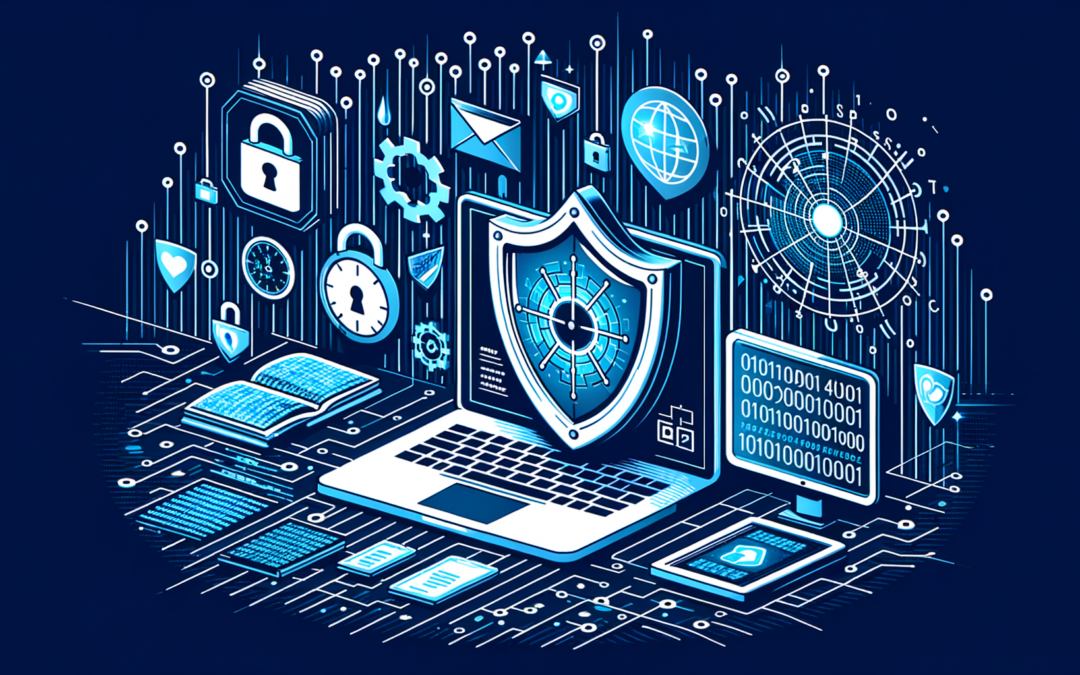Table Of Content
Enhanced Cybersecurity: NIST’s Fresh Insight on Performance
Understanding NIST’s Revised Guidance on Cybersecurity Performance
In the ever-evolving landscape of cybersecurity, defenses must constantly adapt. The National Institute of Standards and Technology (NIST) has recently released updated guidance for evaluating cybersecurity performance. These NIST updated cybersecurity guidelines are crucial, reflecting the increasing complexity of cybersecurity threats both nationally and globally. This comprehensive piece seeks to explore NIST’s new directions in cybersecurity and help organizations align with these standards, ensuring a robust defensive stance against potential cyber threats.
NIST’s guidelines are a concerted effort to provide a structured approach to measuring cybersecurity efficiency and efficacy. This is increasingly vital as organizations face sophisticated attacks from nefarious actors. By offering a model for performance measurement, NIST takes a significant step in assisting industries in identifying strengths and weaknesses in their current cybersecurity protocols. In essence, the updated guidance serves as a blueprint for securing critical infrastructure, which holds paramount importance as digital transformation continues to gain momentum across all sectors.
The Core Components of NIST’s Updated Guidelines
NIST’s guidance emphasizes streamlined processes for assessing, improving, and reporting cybersecurity practices. Organizations can adopt these guidelines to enhance their incident detection and response capabilities. NIST’s model advocates for a systemic and methodical integration of cybersecurity measures into everyday operations. The focus remains on risk management, a critical aspect where identifying and prioritizing risks based on potential impacts is the cornerstone.
Additionally, NIST encourages organizations to engage in regular review cycles. These cycles are integral for maintaining updated and effective cybersecurity measures. By aligning cybersecurity efforts with strategic organizational objectives, entities can safeguard their assets more efficiently. The guidelines also recommend fostering a culture of security within organizations, encouraging continuous education and awareness among staff at all levels. This approach empowers employees to become proactive participants in their organization’s cybersecurity strategy.
The Importance of Implementing Effective Cyber Metrics
With NIST’s new guidance, the emphasis lies heavily on the implementation of effective cybersecurity performance metrics. These metrics enable organizations to quantify their cybersecurity posture, offering a clear picture of where they stand against malicious adversaries. By employing these metrics, companies can identify performance gaps and allocate resources toward bridging these deficits.
NIST outlines key performance indicators (KPIs) that organizations should employ, focusing on areas such as threat detection rates, the speed of incident response, user awareness levels, and the level of adherence to cybersecurity policies. By monitoring these KPIs, organizations can proactively adjust their strategies to combat emerging threats. The value of these metrics lies in their ability to offer measurable insights, which serve as a foundation for continuous improvement in organizational cybersecurity practices.
The Role of IoT in Modern Cyber Threats and Compliance
The integration of the Internet of Things (IoT) into business operations has significantly increased cybersecurity complexities. NIST’s guidance stresses the importance of addressing IoT vulnerabilities due to their expansive attack surface. Devices added to a network introduce potential entry points for cyberattacks, necessitating a comprehensive security strategy tailored to mitigate these specific challenges.
Organizations must adhere to strict regulatory compliance when incorporating IoT solutions. Following NIST’s insights can aid in navigating these challenges, helping companies build secure IoT ecosystems. The guidance underscores the need for continuously updated security policies and procedures to account for IoT-related risks. By incorporating IoT risk assessments into their overall cybersecurity strategy, organizations can fortify their defenses against cyber threats targeting connected devices.
Global Collaboration: Enhancing Cybersecurity Resilience
In light of the persistent threats facing global organizations, the significance of collective efforts to strengthen cybersecurity resilience cannot be overstated. NIST’s guidance underlines the necessity of global collaboration to tackle cybersecurity challenges effectively. By sharing threat intelligence and best practices, organizations can better prepare for and respond to potential security incidents.
NIST encourages international cooperation and knowledge exchange among governments, industries, and academia to foster a united front against cyber criminals. Collaborative initiatives, such as cross-border cybersecurity workshops and joint threat intelligence programs, can enhance the security posture of organizations worldwide. This guidance serves as a call to action for organizations to invest in partnerships that transcend geographical boundaries, capitalizing on shared expertise to fortify defenses against a common enemy.
Adopting NIST’s revised guidelines can significantly bolster an organization’s cybersecurity performance, serving as an effective roadmap in navigating the complex cyber threat landscape. As a proactive measure, organizations should continuously evaluate and adapt their cybersecurity strategies in line with these guidelines, ensuring alignment with best practices and regulatory demands.
In conclusion, NIST’s updated guidance is a critical resource for any organization looking to enhance its cybersecurity posture. By embracing these insights, businesses can fortify their defenses and safeguard their most valuable assets against the persistent threat of cyberattacks.
We at Jun Cyber are committed to helping you navigate these complexities. Our expertise in cybersecurity performance assessments and strategic guidance ensures your organization stays ahead of the curve. Schedule a free consultation with us today to explore how we can fortify your cybersecurity strategy.
Read the full article here. Visit our website: www.juncyber.com. Schedule a call with us: Free Consultation.
External Resources:
- NIST Cybersecurity Framework – Detailed insights into NIST’s comprehensive cybersecurity framework and guidelines.
- CISA: Cybersecurity and Infrastructure Security Agency – Updates and resources on protecting critical infrastructure from cyber threats.
- ENISA: European Union Agency for Cybersecurity – Guidance on global collaboration and data protection best practices.



